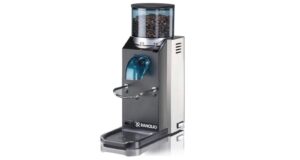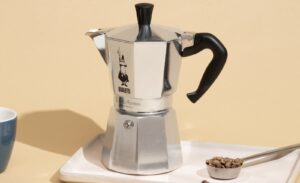Coffee Etching Damascus Steel
5 min read
At its core, etching is a process used to cut into the unprotected parts of a metal surface to create a design. Traditionally, this involves the application of corrosive acids that react chemically with the metal, eating away at the surface in a controlled manner to reveal patterns or images. This method, while effective, requires handling hazardous materials and a well-ventilated working area to avoid harm. In the quest for safer and more environmentally friendly alternatives, artisans have discovered a less corrosive yet equally fascinating medium: coffee.
Coffee etching presents a more aromatic and gentle approach to revealing the hidden beauty of metals, especially suited to the intricate patterns of Damascus steel. Unlike the harsh chemicals traditionally used, coffee, a naturally acidic beverage, offers a milder solution that can safely interact with the steel. The secret lies in the coffee’s tannic acid, which reacts with the iron content in the steel, slowly etching away the surface without the need for strong industrial acids. This reaction is particularly effective on Damascus steel, where the differential etching highlights the contrast between the different types of steel folded within, making the patterns stand out more vividly.
The Significance of Patterns and Etching
Damascus steel holds a place of reverence in the pantheon of metals used throughout history, not just for its legendary strength and durability, but also for its unparalleled beauty.
Etching, especially with coffee, elevates the inherent beauty of Damascus steel by enhancing the visibility and depth of its patterns. The acidic coffee solution reacts differently with the various layers of steel, darkening some more than others and thereby increasing the contrast between them. This not only accentuates the patterns but also adds a rich texture and depth to the steel’s surface, making the patterns dance under the light.
Through etching, the silent stories of Damascus steel’s creation become vivid, turning each piece into a visual and tactile experience.
The Role of Coffee in Etching
Who would have thought that the same brew that fuels late-night cram sessions and early-morning meetings could take on the noble task of etching Damascus steel? So, grab your favorite mug, and let’s dive into how this beloved beverage can transition from your cup to crafting captivating patterns on one of the toughest materials known to man.
Step 1: Choose Your Brew
First things first: not all coffee is created equal, especially when it comes to etching. Imagine selecting a coffee for your steel as you would for your palate. Do you go for the robust, dark roast that promises a bold etch, or the light roast with subtle, nuanced results? Experimentation is key here. And yes, decaf works too, but where’s the fun in that? It’s like choosing non-alcoholic beer at a party—technically it works, but you’re missing out on the kick.
Step 2: Brew It Strong
When it comes to brewing your coffee for etching, think of making it for that one friend who always complains it’s never strong enough. The goal here is to extract as much acidity and tannins as possible, as these are the active agents that will work their magic on the Damascus steel. So, double, or even triple, the amount of coffee grounds you would normally use. If your coffee maker raises an eyebrow (figuratively, of course), you’re on the right track.
Step 3: Prepare Your Damascus Steel
While your coffee is cooling, prepare your Damascus piece for its caffeinated bath. Clean it thoroughly to remove any oils, dirt, or gremlins that might interfere with the etching process. You want nothing between the coffee and the steel—think of it as a first date where you want no distractions.
Step 4: The Dunking
Now, for the moment of truth. Submerge your steel in the coffee or apply the coffee directly with a brush or cloth for more controlled, localized etching. This is where you get to play god, deciding the fate of your metal with every stroke. Will you go for an all-over etch, or will you mask parts of the steel for a patterned effect? The world (or at least the cup) is your oyster.
Step 5: The Waiting Game
Etching is not an instant gratification sport. Depending on the desired depth of the etch, you might need to leave your steel soaking for several hours or even overnight. Use this time to ponder life’s mysteries, or simply to enjoy another cup of coffee. You’ve earned it.
Step 7: Reveal and Neutralize
After the suspenseful wait, remove your steel to reveal the transformation. Rinse it with water, and then neutralize the acid with a baking soda solution to halt the etching process. What emerges is a piece of Damascus steel, now adorned with patterns accentuated by your choice of coffee, each swirl and line a testament to the unconventional union of caffeine and craftsmanship.
Tips and Tricks for a Perfect Etch
Weak Patterns
Cause: A weak pattern can result from using coffee that’s not brewed strongly enough or not leaving the steel in the solution for an adequate amount of time.
Solution: Brew your coffee stronger and consider increasing the etching time. Checking the progress periodically can help you decide if you need a longer etch time to achieve more pronounced patterns.
Achieving Deeper Contrasts and More Defined Patterns
Tip: The type of coffee can significantly affect the etching outcome. Dark roasts generally offer higher acidity and more robust flavors, translating into more pronounced etching effects. Experiment with different brands and roast profiles to find the one that works best for your project.
Optimize Your Coffee Solution
Tip: Experiment with the concentration of your coffee solution. A more concentrated brew can enhance the etching effect. Adjusting the water-to-coffee ratio can help you find the sweet spot for your specific piece of steel.
Control the Etching Time
Tip: The longer you leave the steel in the coffee, the deeper and more pronounced the etching will be. However, there’s a balance to strike, as too long can lead to over-etching and potentially damage the steel. Start with shorter intervals, checking progress frequently, and increase as needed based on your observations.
Post-Etch Polishing
Tip: Once you’ve completed the etching and neutralized the steel, polishing the surface can enhance the contrast and clarity of your etched pattern. Use a fine-grit sandpaper or a polishing cloth to lightly buff the surface. This step can dramatically improve the visual impact of your etching, making the patterns pop.
Final Words of Wisdom
Patience and persistence are your allies in the coffee etching process. Each piece of Damascus steel is unique, and so too will be your etching results. Embrace the experimental nature of this craft, and don’t shy away from trying different techniques and variables. Remember, every etching, whether perfect or flawed, is a step forward in your journey as a craftsman and artist. Happy etching!



